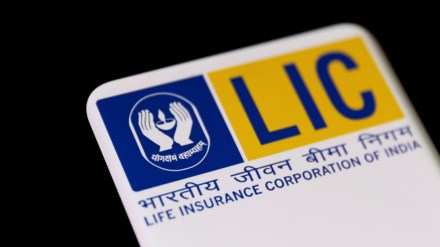The total premium income of Life Insurance of India fell nearly 11% year-on-year(y-o-y) to Rs 2.1 trillion in April-September.
The overall premium income was dragged by a lower group business premium. It fell 30.9% y-o-y to Rs 70,977 crore in the reporting period.
Individual new business premium rose 2.7% y-o-y to Rs 25,184 crore. Individual renewal premium rose 6.2% y-o-y to Rs 1.1 trillion.
The company posted a net profit of Rs 17,469 crore in the first half of the current financial year, which includes an amount of Rs.13,768 crore pertaining to the accretions on the available solvency margin, transferred from the non- participating fund to shareholders account.
The life insurer had posted a bottom-line of Rs.16,635 crore in April-September, 2022, which includes an amount of Rs 4,542 crore pertaining to the accretions on the available solvency margin for the last quarter of 2021-22(April-March) and this was transferred from non-participating fund to shareholders account on September 30.
While the bottom-line fell 50% y-o-y to Rs 7,925 crore in July-September, the company explained that it has changed its accounting policy in September 2022 regarding transfer of amount pertaining to the accretion on the available solvency margin from non-participating policyholder’s account to shareholder’s account.
As a result of this, the bottom-line for the first half of the current financial year is not comparable to the previous year’s figure.
The company sold a total of 8.1 million policies during the first half of the current financial year, slightly lower than the 8.4 million policies sold last year.
Annualised premium equivalent fell 10.3% y-o-y to Rs 22,627 crore in April-September. Participating products comprised 89.2% of the individual business, whereas the remaining 10.76% constituted non-participating products.
The value of new business fell to Rs 3,304 crore in April-September from Rs 3,677 crore a year ago. Value of new business (VNB) margin was flat at 14.6% in April-September.
“The corporation has been focussing on the non-participating business, which is a competitive market. We have revised rates in some products to increase our market share here. Another aspect is the impact of the yield curve, which has reduced,” Executive Director (Actuarial) Appointed Actuary Dinesh Pant said explaining the reason for the flatness in VNB margin.
The Indian embedded value rose 21.7% y-o-y to Rs. 6.6 trillion as on September 30.
The solvency ratio rose to 1.90 as on September 30 from 1.88 a year ago.
The persistency ratio on number of policies basis for the 13th month and 61st month were 66.80% and 50.35%, respectively. The comparable persistency ratios in April-September 2022 were 65.21% and 51.61%, respectively.
“We are conscious of the market dynamics in certain parts of our business and are working towards profit-oriented consolidation. The distribution mix is also more diversified with increase in share of Bancassurance and Alternate Channels,” Chairperson Siddhartha Mohanty said.
